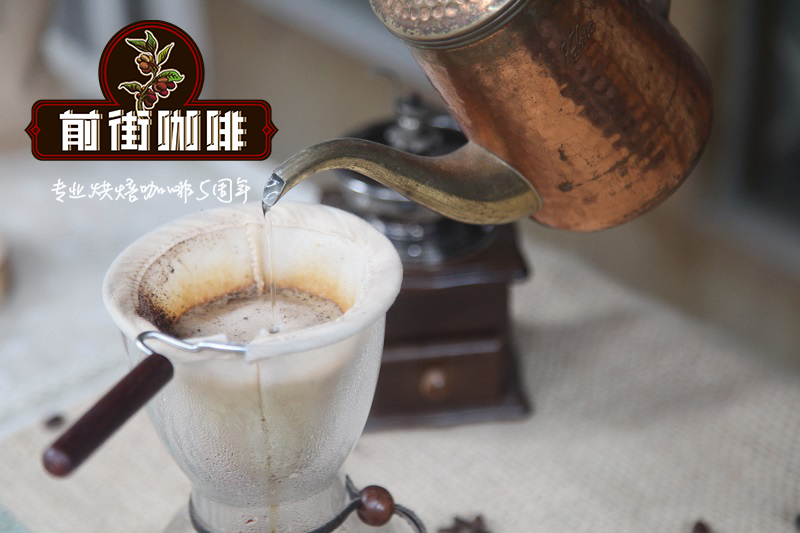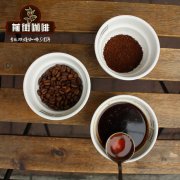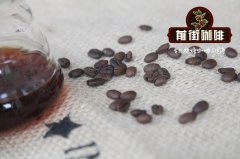Semi-sunny Brazilian hand-made coffee beans at the San Antonio Manor in the Diamond Plateau of Brazil's Basiya province.

Professional coffee knowledge exchange more coffee bean information please follow the coffee workshop (Wechat official account cafe_style)
Coffee was first introduced to Brazil in the early 18th century. In 1727, the Brazilian government sent a personable army officer to secretly bring coffee seeds from French Gaiana to Brazil on the pretext of mediating border disputes. It is said that the governor's wife of French Gayana was so fascinated by the officer that she secretly brought coffee tree seeds to him at a farewell dinner party. At present, 2 million hectares of land in Brazil is used to grow coffee, the largest is Arabica, and the beans will eventually be sent to large bakers in various countries, also known as Santos (in the name of the export port of Santos, not the producing area). Brazil has also proved to be able to produce gourmet coffee and small quantities of coffee, and the local boutique coffee can not only be provided by small-scale coffee farmers. The main coffee producing areas in Brazil are Sul de Minas South Minas, Matas de Minas Minas South East Mountain Forest, Cerrado Hirado, the north-central mausoleum of Chapadas de Minas Minas, Mogiana, Paran á Parana and Bahia Bachia. There are both traditional varieties and variants, such as Bourbon, Mondo Novo Mondonovo, Icat ú Ikatu, Kaduai, Iapar, cultivated card Taiyi. In the past, these beans were washed with water, but more and more people are using natural drying and half-sun treatment in the hope of showing the different characteristics of coffee beans in the process. Some larger estates and even every treatment are used. The harvest time varies from Brazil to Brazil, and the beans we import from Brazil are usually shipped between October and April of the following year.
The Brazilian Fine Coffee Association (BSCA) is the biggest promoter both internationally and domestically. BSCA is committed to improving the quality of Brazilian coffee beans and coffee agriculture. Internationally, it helps promote good Brazilian coffee and helps Brazilian coffee farmers make their beans meet the requirements of the global boutique coffee market. On the domestic side, coffee farmers are helped to continuously improve their farming operations and ensure that farm workers have good social welfare.
Santo Ant ô nio San Antonio is a small estate with an average temperature of 21 degrees on the hillside of Piat ã in Bahia Bahia province last year. The current owner of the estate, Ant ô nio Macedo Souza, inherited his father's land. At that time, Antonio gave up planting coffee trees, and it was not until 1998, when Antonia received help from the local coffee farmers' association (ASCAMP), that the fate of the small farm was reversed. ASCAMP is a local association set up in Piata to assist coffee farmers who have land but no resources to invest in coffee. Antonio joined the association and increased the number of coffee trees in the garden to 6000. With the concerted efforts of the whole family, the business gradually became stable and became the main source of income for the family. Most of the work in the manor is done by family members, and extra workers are hired only during the harvest season. the harvest season is usually from July to September, and the ripe bright red coffee and cherries are strictly harvested every day. it is processed and then dried in the sun in the bean drying farm on the farm, which is turned 18-20 times a day, and then numbered in batches and stored for future sale.
Property Characteristics: farm characteristics
Farm Manor name: Santo Ant ô nio San Antonio Manor
Farmer coffee grower: Ant ô nio Macedo Souza
City city: Piat ã
Region producing area: Chapada Diamantina (Bahia) Diamond Plateau (Basiya Province)
Country countries: Brazil Brazil
Altitude altitude: 1300 m
Soil soil: Sandy and clay sand and clay
Farm Size Farm area: 240ha
Coffee growing area Coffee planting area: 52 ha
Certification certification: None none
Coffee Characteristics: coffee characteristics
Variety variety: Catua í Kadouai
Processing System treatment: Pulped Natural half-sun
Appearance appearance: 16Murray 17 items
Top Jury Descriptions judge's comment: the baking degree measured by the cup for 60 seconds at the beginning of the first explosion (Cinnamon)
Aroma aroma / flavor flavor: almond, cardamom, cinnamon, spice, sweet persimmon, licorice, blueberry, carambola, peanut, subtle vanilla ice cream
Sour complex: citric acid, red plum acid, red meat plum, mint, tartaric acid of a little red wine
Complexity and other other: sugarcane sweet, low complexity, smooth and excellent ester shape
Overall comment: Santo Ant ô nio San Antonio is an excellent manor in Brazil, and the winners of the first prize or presidential prize in many coffee competitions, including the C.O.E contest, produce coffee of excellent quality, this time the coffee beans just harvested in 2011 are very clean, raw beans have elegant flavor of American ginseng, vibrant acidity after brewing is suddenly replaced by sweet and refreshing mint flavor.
Important Notice :
前街咖啡 FrontStreet Coffee has moved to new addredd:
FrontStreet Coffee Address: 315,Donghua East Road,GuangZhou
Tel:020 38364473
- Prev

Brazilian Diamond Plateau Brazilian Coffee from San Antonio Manor on the Southern Plateau of Brazil
Professional coffee knowledge exchange more coffee bean information please follow the coffee workshop (Wechat official account cafe_style) Brazil Diamond Plateau San Antonio Manor peel sun pearl beans [jung bean coffee raw beans] South America Brazil Pulped Natural Santo Antonio Estate PB countries Brazil (Brazil) producing area Sul de Minas)
- Next

Recommendation of Brazilian hand-made coffee beans in San Antonio Manor, Diamond Plateau, Brazil
For more information about coffee beans, please follow the Coffee Workshop (Wechat official account cafe_style) Classical mixed Santo Antonio Estate of Chateau San Antonio, Brazil, is a collection of large and medium-sized estates to the south of Minas in the town of San Antonio, produced using advanced planting and processing technologies. The group employs a
Related
- Detailed explanation of Jadeite planting Land in Panamanian Jadeite Manor introduction to the grading system of Jadeite competitive bidding, Red bid, Green bid and Rose Summer
- Story of Coffee planting in Brenka region of Costa Rica Stonehenge Manor anaerobic heavy honey treatment of flavor mouth
- What's on the barrel of Blue Mountain Coffee beans?
- Can American coffee also pull flowers? How to use hot American style to pull out a good-looking pattern?
- Can you make a cold extract with coffee beans? What is the right proportion for cold-extracted coffee formula?
- Indonesian PWN Gold Mandrine Coffee Origin Features Flavor How to Chong? Mandolin coffee is American.
- A brief introduction to the flavor characteristics of Brazilian yellow bourbon coffee beans
- What is the effect of different water quality on the flavor of cold-extracted coffee? What kind of water is best for brewing coffee?
- Why do you think of Rose Summer whenever you mention Panamanian coffee?
- Introduction to the characteristics of authentic blue mountain coffee bean producing areas? What is the CIB Coffee Authority in Jamaica?

